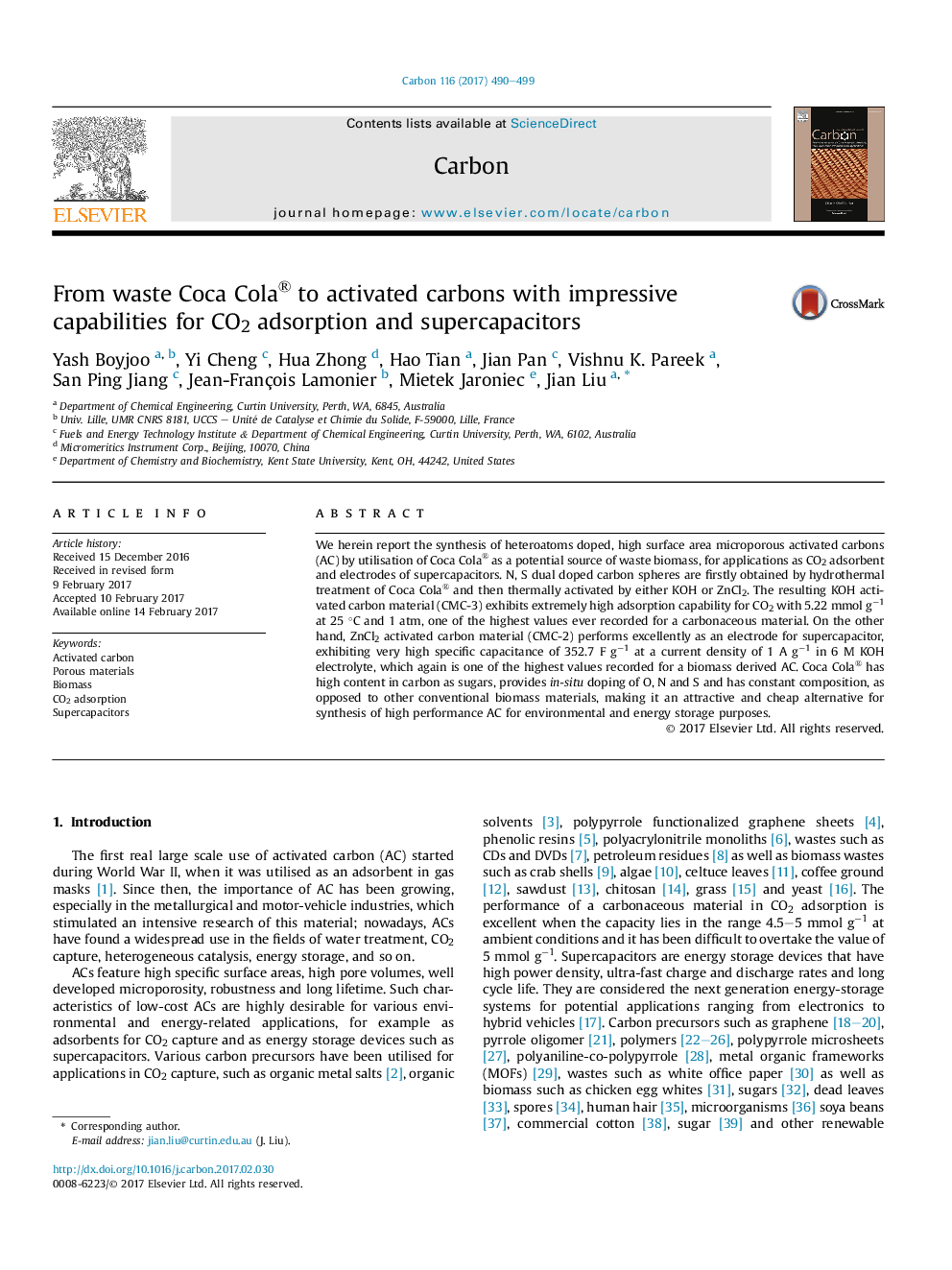| Article ID | Journal | Published Year | Pages | File Type |
|---|---|---|---|---|
| 5432207 | Carbon | 2017 | 10 Pages |
We herein report the synthesis of heteroatoms doped, high surface area microporous activated carbons (AC) by utilisation of Coca Cola® as a potential source of waste biomass, for applications as CO2 adsorbent and electrodes of supercapacitors. N, S dual doped carbon spheres are firstly obtained by hydrothermal treatment of Coca Cola® and then thermally activated by either KOH or ZnCl2. The resulting KOH activated carbon material (CMC-3) exhibits extremely high adsorption capability for CO2 with 5.22 mmol gâ1 at 25 °C and 1 atm, one of the highest values ever recorded for a carbonaceous material. On the other hand, ZnCl2 activated carbon material (CMC-2) performs excellently as an electrode for supercapacitor, exhibiting very high specific capacitance of 352.7 F gâ1 at a current density of 1 A gâ1 in 6 M KOH electrolyte, which again is one of the highest values recorded for a biomass derived AC. Coca Cola® has high content in carbon as sugars, provides in-situ doping of O, N and S and has constant composition, as opposed to other conventional biomass materials, making it an attractive and cheap alternative for synthesis of high performance AC for environmental and energy storage purposes.
Graphical abstractCoca Cola® has been used to synthesise porous carbon via hydrothermal carbonisation followed by KOH and ZnCl2 high temperature activation. The KOH activated carbon was shown to be an outstanding CO2 adsorbent with 5.22 mmol gâ1 of CO2 adsorbed at ambient conditions. ZnCl2 activated carbon displayed an excellent supercapacitor performance with high specific capacitance of 352.7 F gâ1 at 1 A gâ1.Download high-res image (249KB)Download full-size image
